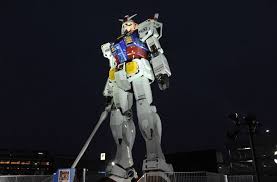
Breaking News
 Your body has a hidden reset button that most people never use.
Your body has a hidden reset button that most people never use.
 A Simple Way to Grow Fresh Greens Indoors
A Simple Way to Grow Fresh Greens Indoors
 Windows 10 is DEAD in 2025? -- Here's How I Run It SAFELY Forever (No Updates)
Windows 10 is DEAD in 2025? -- Here's How I Run It SAFELY Forever (No Updates)
Top Tech News
 HUGE 32kWh LiFePO4 DIY Battery w/ 628Ah Cells! 90 Minute Build
HUGE 32kWh LiFePO4 DIY Battery w/ 628Ah Cells! 90 Minute Build
 What Has Bitcoin Become 17 Years After Satoshi Nakamoto Published The Whitepaper?
What Has Bitcoin Become 17 Years After Satoshi Nakamoto Published The Whitepaper?
 Japan just injected artificial blood into a human. No blood type needed. No refrigeration.
Japan just injected artificial blood into a human. No blood type needed. No refrigeration.
 The 6 Best LLM Tools To Run Models Locally
The 6 Best LLM Tools To Run Models Locally
 Testing My First Sodium-Ion Solar Battery
Testing My First Sodium-Ion Solar Battery
 A man once paralyzed from the waist down now stands on his own, not with machines or wires,...
A man once paralyzed from the waist down now stands on his own, not with machines or wires,...
 Review: Thumb-sized thermal camera turns your phone into a smart tool
Review: Thumb-sized thermal camera turns your phone into a smart tool
 Army To Bring Nuclear Microreactors To Its Bases By 2028
Army To Bring Nuclear Microreactors To Its Bases By 2028
 Nissan Says It's On Track For Solid-State Batteries That Double EV Range By 2028
Nissan Says It's On Track For Solid-State Batteries That Double EV Range By 2028
Japan is building a 60-foot-tall, walking Gundam robot

First going to air in 1979, Yoshiyuki Tomino's Gundam series has left an indelible mark on Japanese culture and the world of animation. Its giant, samurai-influenced, sword-fighting mecha robots have launched nearly 50 official TV series and movies, and inspired countless others. Transformers, Pacific Rim, Real Steel, Voltron, MegaBots, anything with a big robot in it owes some debt to Gundam, indeed, even the Master Chief's armor in the Halo series of video games. It's impact is so great, Gundam is currently ranked as the 14th highest-grossing media franchise of all time.
Japan in particular loves these big fellas. Sales of miniature figurines from the official Bandai Namco company itself were approaching half a billion back in 2015. And there's been no shortage of full size, 18-meter-tall (60-ft) recreations either.

 What MAGA is focused on
What MAGA is focused on Carbon based computers that run on iron
Carbon based computers that run on iron

